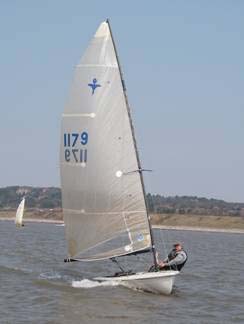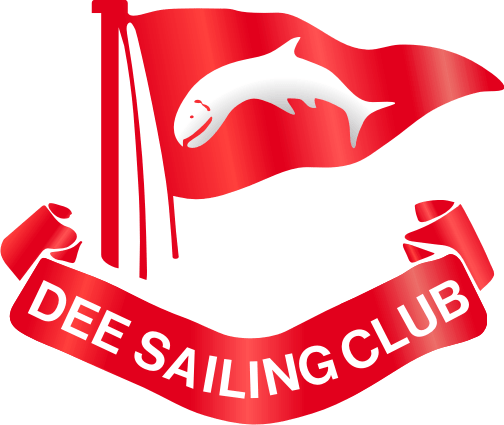Handicap Dinghy Fleet Captain – Ian McLean
MONOHULL RACING
High Performance: I am very interested to hear from anyone with leanings towards racing the following: Canoe, Contender, RS600, RS700, B14, 505, Osprey, 49er etc.
General Handicap: There’s plenty of eligible candidates on the books for racing in the handicap class. Please do have a go. It is easy to put a race on for you. If you haven’t raced before – don’t worry – there are those who will gladly help out. Just ask.
The Dee Laser paragraph!
The Laser is becoming popular at Dee. I think I have counted five so far and a couple of variants in the fleet. The boat seems popular due to the keen helm not having to find crew. I say, check your personal hygiene! Anyway, for all you people who would rather sail solo then the Laser is a popular boat within a competitive handicap fleet. Crew weight is recommended to be above 60kg. A manageable length of 4.23m with a beam of 1.4m and a 59kg hull and a 7.06m sail gives adequate performance, which can be quite a challenge in windier weather.
Designed by Bruce Kirby it sails off a PY of 1078 which gives close racing with the Wayfarers.

Being all GRP construction it is also the low maintenance option for those who would rather not varnish.
Go and drool at www.laser.org.uk
Phantoms at the Dee



The Phantom was designed by Paul Wright and Brian Taylor in 1971. They wanted to produce a single-hander that was exciting to sail, manageable and at the same time affordable to build. It isn’t possible to design a boat that will accommodate all weights, even in these days of ‘wings’ and equalisation systems. As there were already boats on the market for the lighter helms they decided to design a boat that was both comfortable and fast for larger sailors. A Phantom sailor shouldn’t weigh less than 10 stone, and is most suitable for those in the weight range of 12 to 18 stone (76 to 115 Kg). One advantage with the phantom is that both the class association and the designers view the development of the class in a proactive manner always providing that care is taken not to outclass older boats. Latterly the design has been modified to incorporate self draining cockpits and carbon spars. Additionally the design allows freedom in cockpit design and sailors are therefore able to develop cockpit sail and rig control systems that suit their individual requirements.
A one design high performance single-hander the Phantom has a hard chine hull with a deep ‘V’ bow, a flat run aft, and planes easily. With her lightweight hull and large rig on a stayed mast she has a high power to weight ratio, but is stable and responsive. There is no trapeze or spinnaker and she can carry a wide range of helm weights. The Phantom is suitable for home construction using the stitch and glue method or can be bought professionally built in GRP foam sandwich, or wood.
| LOA | 4.42m or 14ft 6in |
| Beam | 1.64m or 5ft 6in |
| Mast Height | 6.1m or 20ft |
| Sail Area | 9.75sqm or 105sqft |
| Weight | 61kg or 134.2lb |
| Rig | Una |
| Crew | One |
The Phantom is available in a variety of designs.
- Conventional Wooden either with or without a self draining hull.
- Polyester ( the early Vandercraft Phantoms were constructed using this material).
- Composite – GRP or Epoxy hull with wooden decks.
- Epoxy self draining hull.
Rig & Sails
In addition to conventional alloy rigs, the Phantom may be fitted with a carbon mast and boom which increases power and responsiveness. The Phantom uses a sail with the same area as the Fireball and this huge area combined with the latest materials used in the manufacture of the hull and high tech rig gives the helm a fantastic sailing experience.
Various masts and boom combinations are available depending upon helm weight and ability. Traditional masts by Proctor, Wavelength and Superspars are available as well as Carbon masts by Proctor and Superspars. The addition of a carbon mast, whilst not a necessity does seem to improve boat handling and response to gusts but many association members sail with conventional \’tin\’ rigs and are very competitive. Carbon booms do seem to have a distinct advantage the biggest being that it does not hurt as much when gybing.
The Phantom sail has an incredibly powerful leach and the helm can spend much of the time trying to de-power the rig to bring the boat under control. The rig employs an adjustable forestay that allows the mast to be adjusted on the water and this combined with a powerful kicker system and plenty’ of hiking will make the boat somewhat more forgiving.
Sails are available from a variety of manufacturers in Dacron, Kevlar and other materials. Full cut and flat cut sails can be made depending upon helm weight, choice of rig and type of hull.
The Phantom is an outstanding racing machine that is growing in popularity with each passing season. With 65 boats at the last Nationals and with some world class helms being recently recruited to the class we hope that you too will be seduced by the beautiful design and join us.
For more details contact Ian ? ?Phantom Raspberry Blower’
Thanks to the Phantom Association for the use of text and images
www.phantomclass.org.uk
